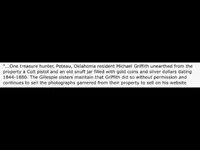All land surveying is described by metes and bounds (distances and angles from one point to the next), as shown on any legal description of real property such as your property deed. What I'm talking about is the 36-square mile grid system established by Thomas Jefferson and implemented into a standard method of dividing public land- most of which eventually became private land due to sale, grant or homesteading as time passed.
https://en.wikipedia.org/wiki/Land_Ordinance_of_1785
These land sections (square miles) are what the template overlays are allegedly used for. The template can be scaled to fit any land map of course, the USGS quad sheets being a very common example - and the source of much speculation regarding the "KGC's" use of surveyors on their "team". The USGS itself has been alleged to be part of the big plan.
Not only is the template overlay alleged to be a way to locate caches, but also the 36 numbered squares of the Townships. The numbers of the sections are alleged to be referred to in carved clues, for example. There are many ways that a surveyor can make a cache location complicated to find, as you might imagine.
There are other templates similar to TJ's with slight differences, but nearly the same. Some have additional annotations, with interesting symbology. The point is, it looks like a simple tool but there is an alleged proprietary method of using of the thing. Folks go to the dot locations and find a lot of empty holes, thinking that someone has beaten them to the prize. IMO, those holes are just plain empty and always have been.
True, assuming you can locate the appropriate starting point. Carved stones can be destroyed, moved or otherwise disappeared. I have a funny story about a carved stone and treasure hunter, but one that is not as funny is a section corner that my partner and I located last Friday - a nice GLO brass cap set onto a steel pipe driven into the ground in 1938. The un-funny thing is that it replaced an original carved stone that was placed in the 1870s about 140 feet away. That original stone was incorrectly set and needed to be replaced. It was removed and buried. Tough luck for somebody who was looking for it, eh?
IMO, if these "KGC" caches exist as speculated, most (maybe not all) were hidden late 1800s-early 1900s, and many relocated 1920s-1930s.




